London's bridges will be completely illuminated by the next three years, and the first four bridges were illuminated in mid-July this summer. The next few will be illuminated by autumn next year with the third and final phase to follow subject to the schedule. The first four bridges illuminated this year were Millennium Bridge, Southwark Bridge, Cannon Street rail bridge, and London Bridge. Each bridge has been illuminated to a separate artistic style, keeping in mind its location and sensitivity to its environment.
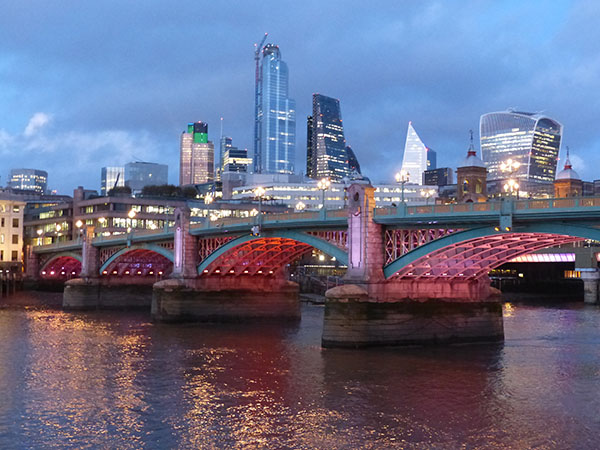
The winners of the bid to illuminate the bridges were American artist Leo Villareal and British architects Lifschultz Sandilands (LDS). The project is thought to be the longest-running art project in the world. It will cover 4.5 nautical miles of river when completed.
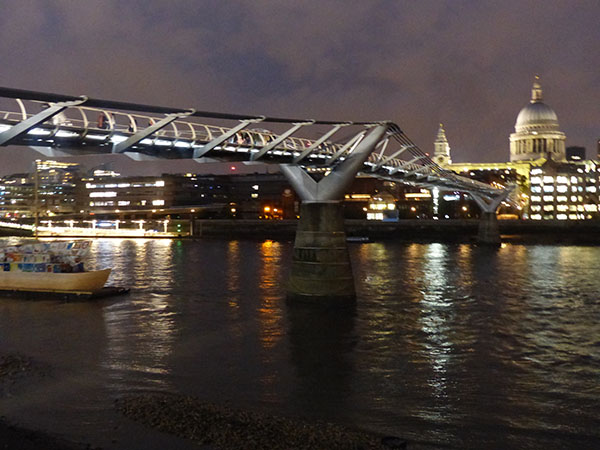
Above is Millennium Bridge, a pedestrian footbridge that was created for the millennium year 2000 but launched two years later due to problems with the bridge's design and wobbling. The LED lighting on the bridge has been installed to mimic the flow of people moving across the bridge, and the movement was inspired by superhero Flash Gordon. The white light travels quickly from one side of the bridge to the other. The motion mimics movement at great speed, and the river below remains in darkness during the light motion. The bridge is covered in miniature artworks by street artist Ben Wilson, noted for painting discarded bubblegum on the bridge.
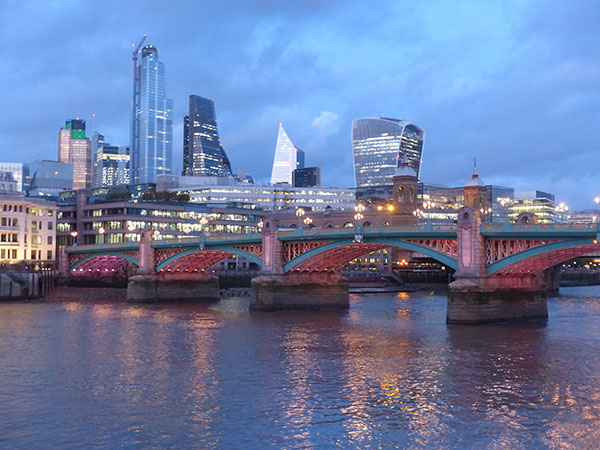
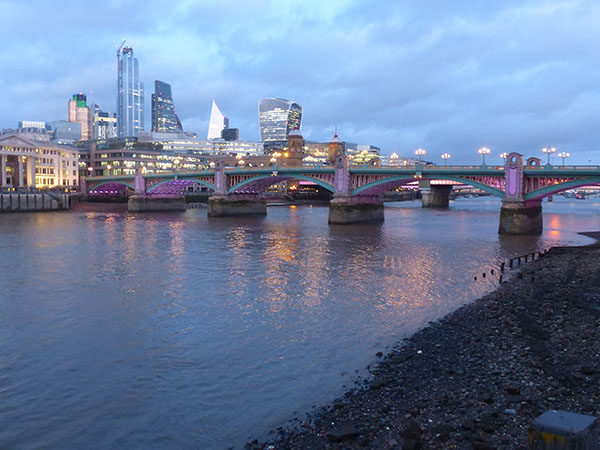
Above is Southwark Bridge, which opened in 1921 and was privately financed. It replaced an earlier bridge called Queen Street Bridge and contains stairs down to the river. Underneath the south part of the bridge is a pedestrian tunnel with a mural relating to old London and the frost fairs held on the river when it used to freeze over. Southwark Bridge is illuminated with saturated pink, red, and purple colours that gently fade into one another. The lighting represents an impressionist painting.
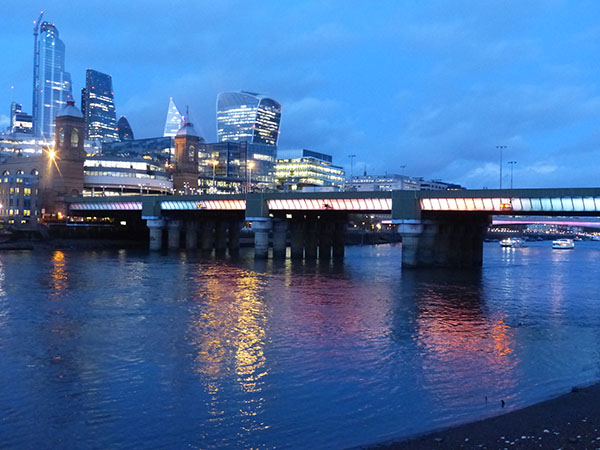
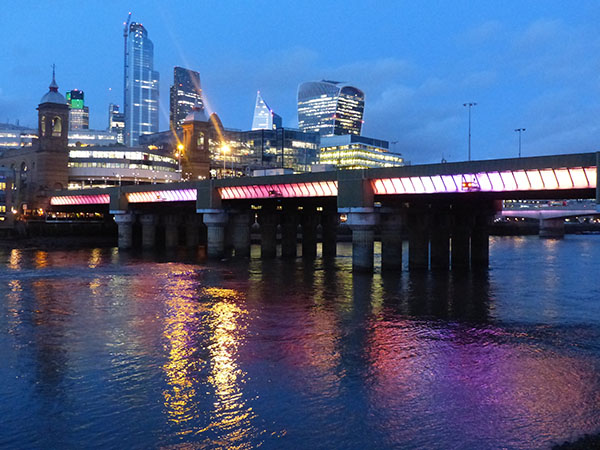
The Cannon Street rail bridge (above) was built in 1866 for trains to cross from Cannon Street Station. The name is a shortened deriviation of the former use of the area known for its candle-making; the area is known as Candlewick. The two towers on the northern bank contain water tanks for hydraulic lifts. The building above the station is offices today, and I worked in the top of the offices for a year and a half. The lighting for the bridge is inspired by its use as a railway bridge, and the colours gently fade and move together and appear to mimic moving trains.
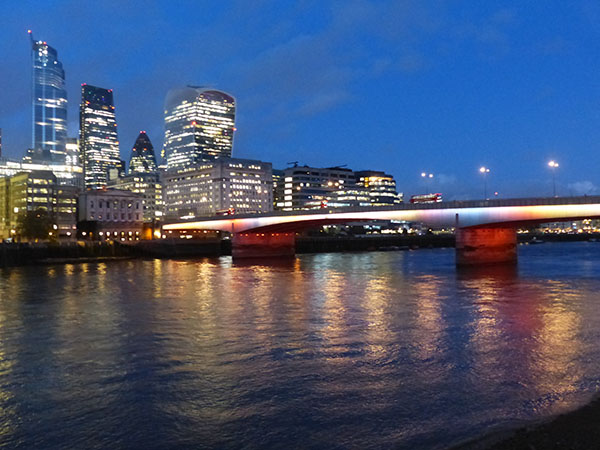
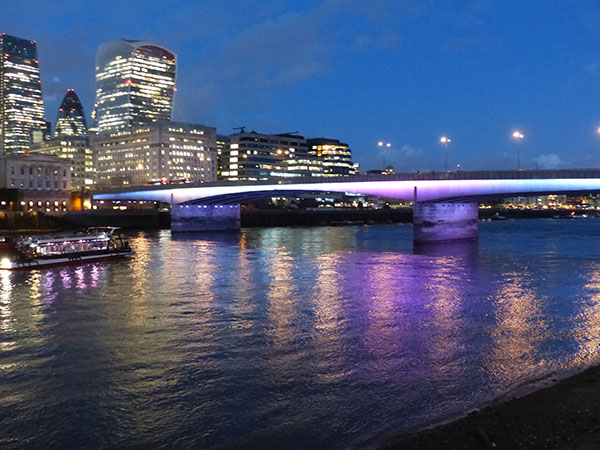
London Bridge, pictured above, is the oldest bridge in London and built when London was large enough to require a bridge to get across the river. The old bridge was actually a couple hundred yards from the current position, and it contained multi-storey buildings on the bridge. It was also used to show what happens to traitors as spikes across the bridge contained the severed heads of criminals or people considered to be a problem to the British Empire/royal family. The modern bridge dates from the 1830s with the previous one bought by an American and placed up in Arizona. The lighting uses colours that fade into each other and glow, and they complement the design of the bridge.
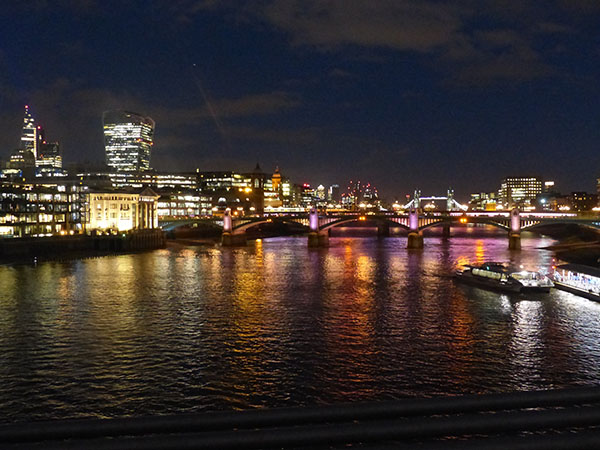
Southwark bridge from Millennium Bridge
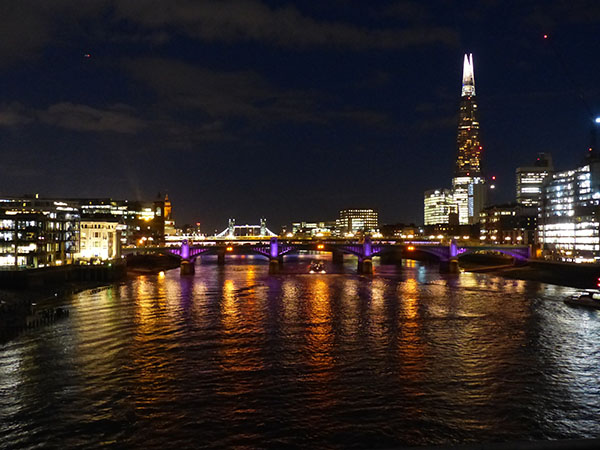
The illuminated bridges have transformed London and make it an inspiring and beautiful place to live. I think the colours make everyone a little more happier. I can't wait to see how the other bridges are transformed next autumn.

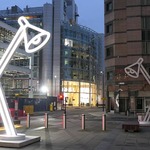
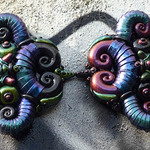
Leave a comment